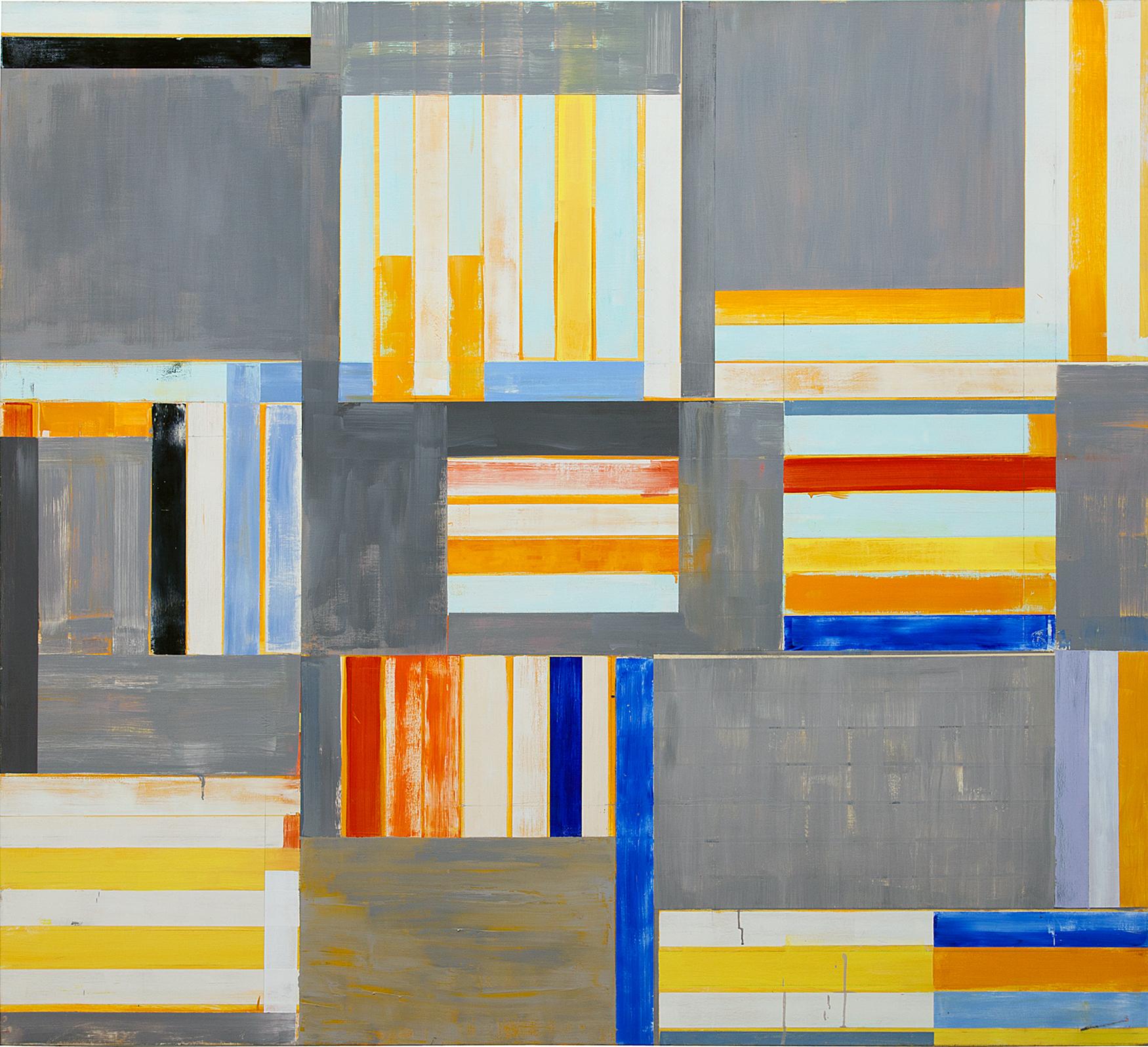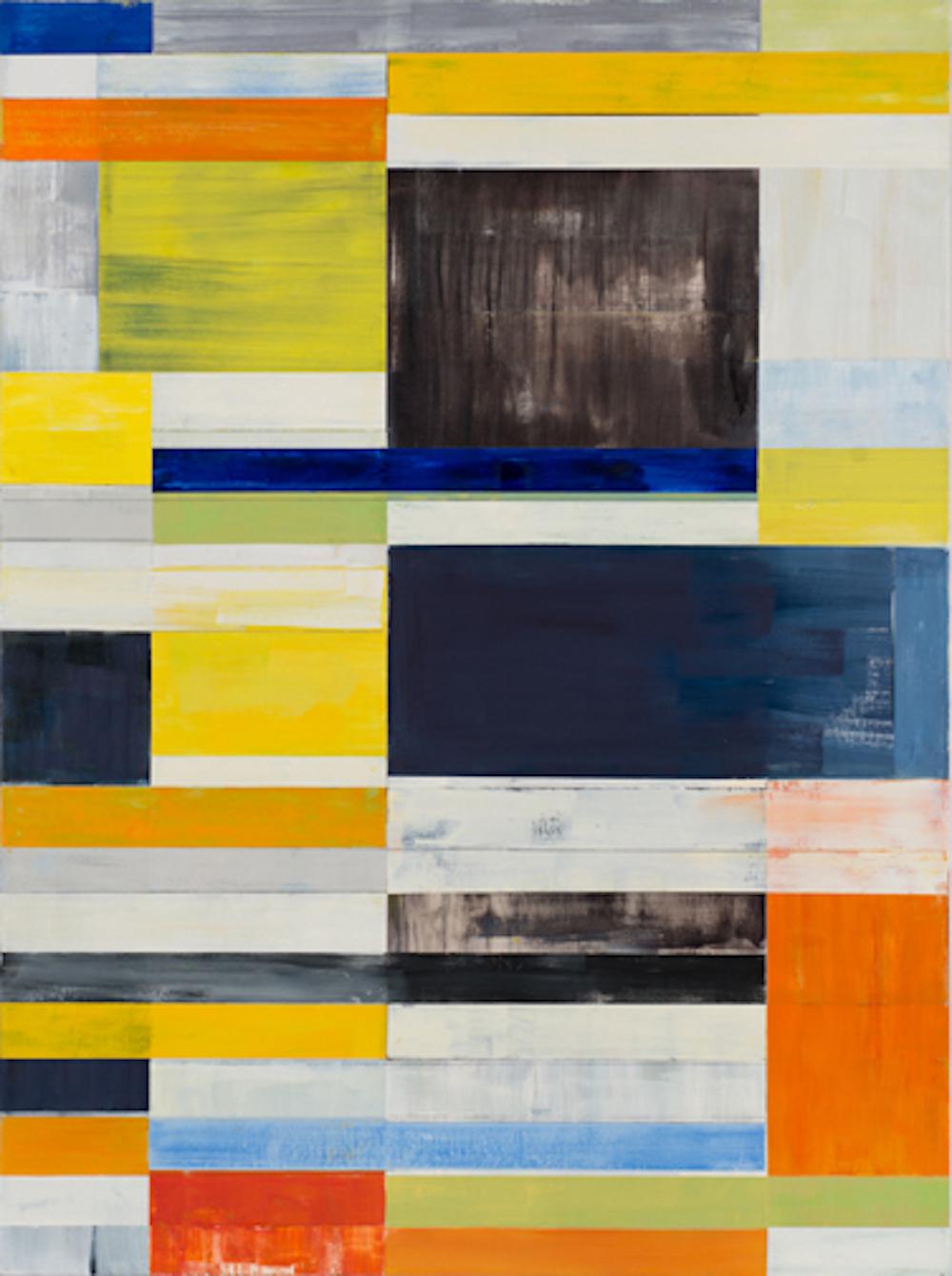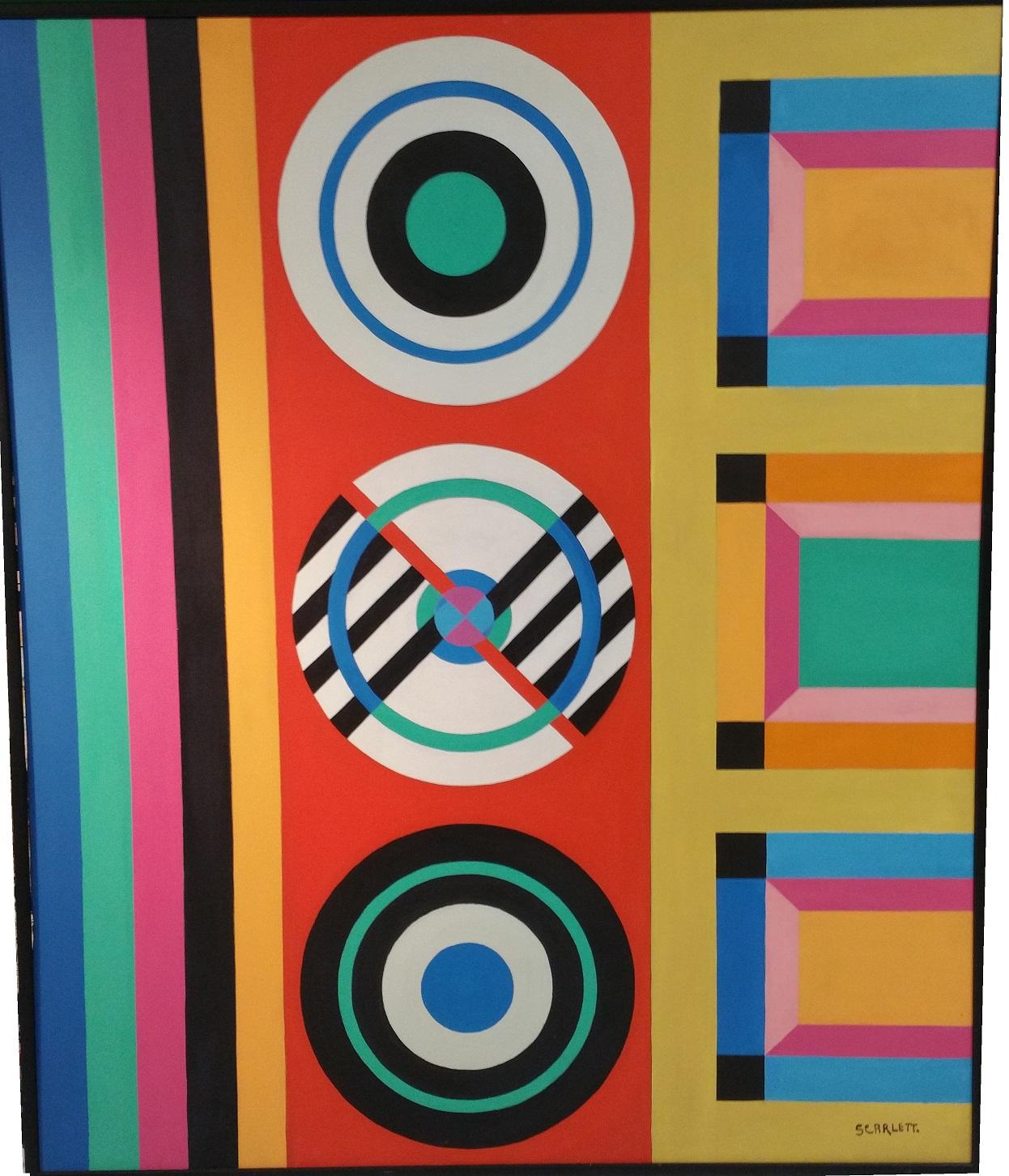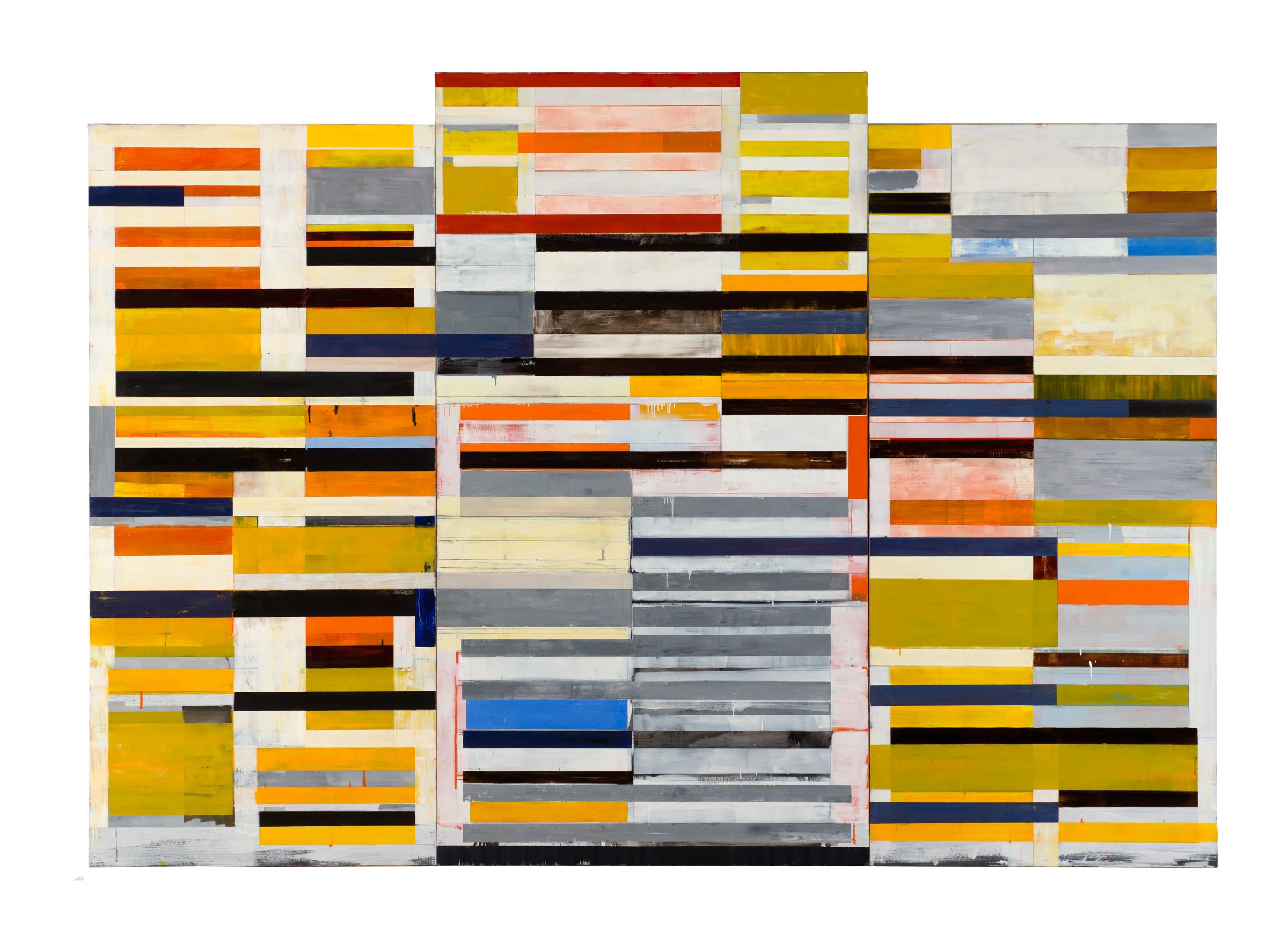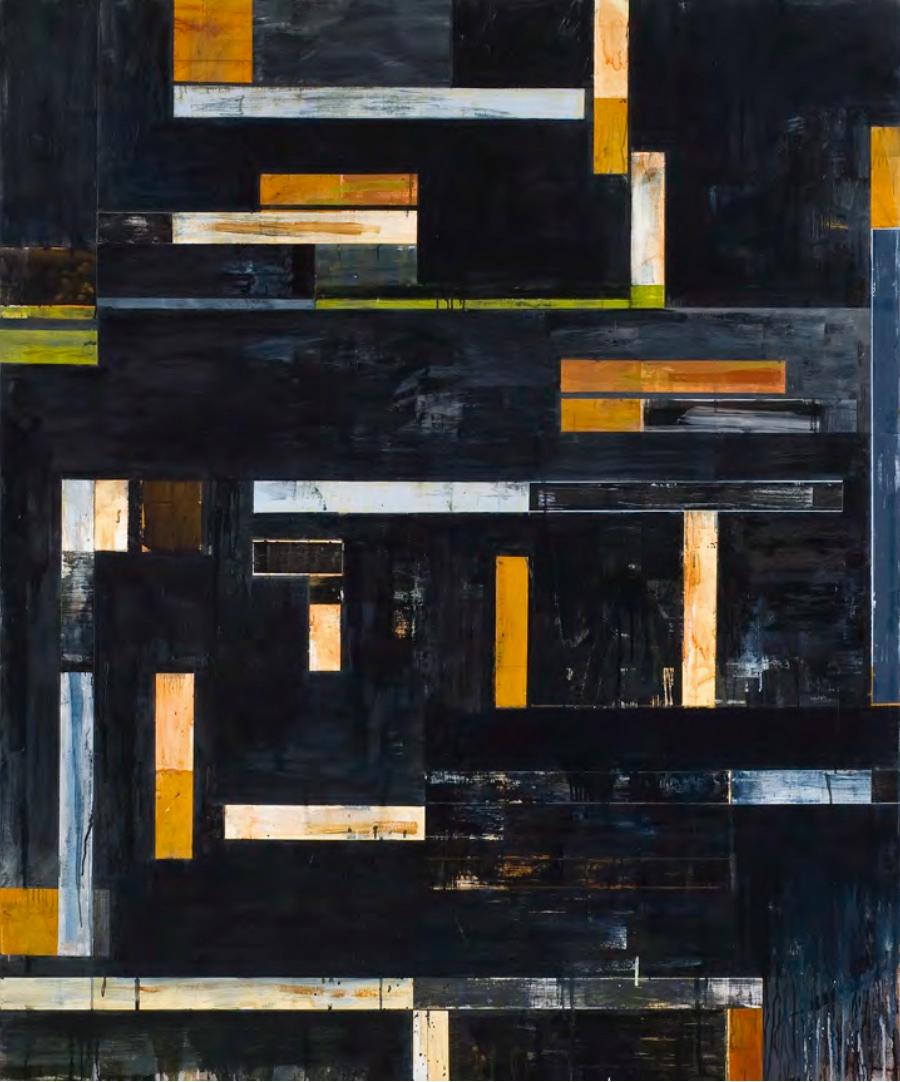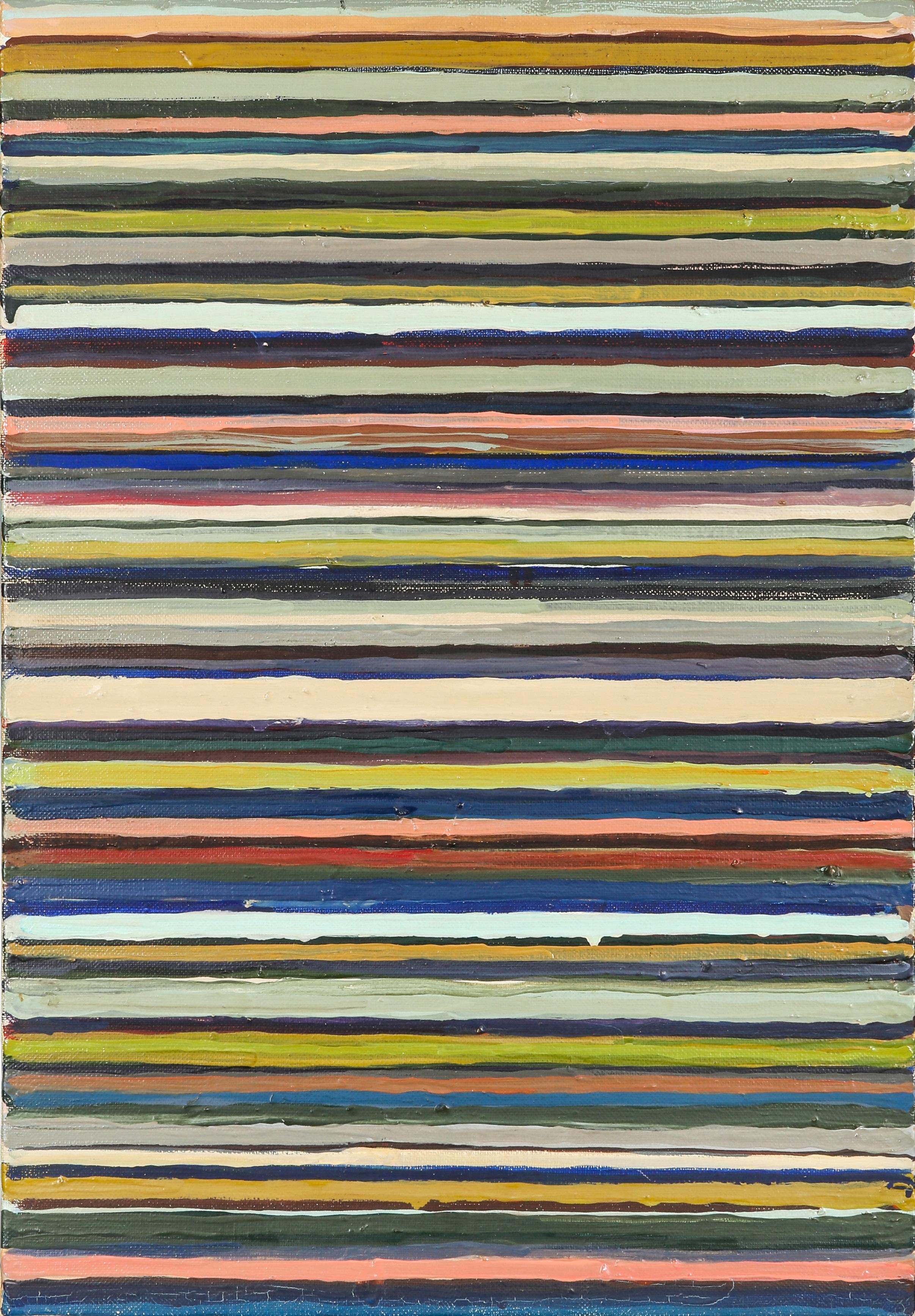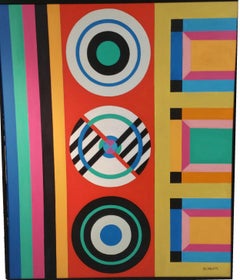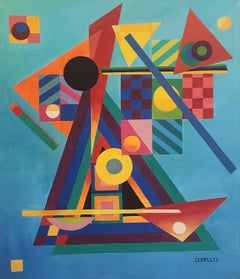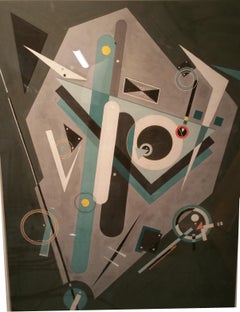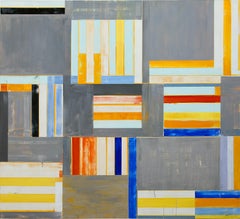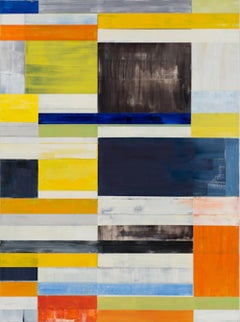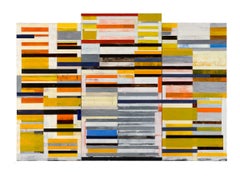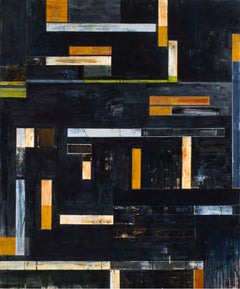Items Similar to Orange Circle
Want more images or videos?
Request additional images or videos from the seller
1 of 6
Paul ReedOrange Circle1965
1965
About the Item
Signed & dated Verso. 1965
Paul Reed in 1970. He favored “staining” untreated canvas.
Paul Reed, the last surviving member of the Washington Color School, who explored the complexities of color and form in vibrant bio-morphic and hard-edge abstract paintings, died on Sept. 26 at his home in Phoenix. He was 96.
His death was confirmed by his daughter, Jean Reed Roberts.
Mr. Reed acquired his public identity as an artist when he was included, along with Gene Davis, Kenneth Noland, Morris Louis, Thomas Downing and Howard Mehring, in “The Washington Color Painters,” a landmark traveling exhibition that began at the Washington Gallery of Modern Art in 1965.
All of the other painters had been shown, the year before, in “Post-Painterly Abstraction,” a 31-artist exhibition at the Los Angeles County Museum of Art organized by the critic Clement Greenberg in an effort to write a new chapter in the historic march of abstract art.
Like his fellow Washington artists, Mr. Reed rejected the hot, gestural approach of Abstract Expressionism and explored color and abstract forms in a cooler mode. Working with diluted acrylic paint, in discrete series that methodically explored formal issues, he created luminous fields of color by letting the paint bleed into, or stain, untreated canvas.
“I have a saying: Pollock dripped, Frankenthaler poured,” he told The Washington Post in 2011, referring to the artist Helen Frankenthaler. “Morris Louis poured. Howard Mehring sprinkled. I blot.”
In his first stained series, “Mandala,” color radiated from a circular central image. The nearly 100 paintings in his “Disk” series, which he called “a matrix for exploiting color,” consisted of a central circle and two triangles positioned at the corners of the canvas.
Over the next decade he moved to hard-edge geometric zigzags and stripes in the vertical “Upstart” series, color grids and shaped canvases that allowed for more complex experiments in form and color relations. He also made welded steel sculptures and, in the “Quad” series of the 1980s, collaged photographs.
“Reed was, in a sense, the ‘little master’ of that first batch of Washington colorists,” the critic Benjamin Forgey wrote in The Washington Post in 1997. “He was a latecomer — he didn’t turn seriously to painting until he was in his mid-30s — but he never considered becoming anything other than an abstract painter. And when he was ready to show, in his early 40s, he was a very good abstract painter indeed.”
Mr. Reed gave himself a more modest assessment in an interview with NPR last year. “I’m sort of low man on the totem pole of that group of six,” he said.
Paul Allen Reed was born in Washington on March 28, 1919. After graduating from McKinley Technical High School, he studied art for a semester at San Diego State University but, short of money, he returned to Washington to work as a graphic artist at The Times-Herald, taking art classes at the Corcoran School of Art at the same time. He was rejected for military service because of poor hearing.
Mr. Reed worked for a short period as a graphic designer with an advertising agency in New York just as Abstract Expressionism was taking off, but he returned to Washington in the early 1950s and started his own design agency. In 1962 he was hired by the newly established Peace Corps to oversee the design of its publications.
Mr. Reed had his first solo show in 1963 at the Adams-Morgan Gallery in Washington. The same year, in another solo exhibition, he showed his “Satellite Paintings” at the East Hampton Gallery in Manhattan. These were shaped canvases, each with a smaller companion canvas whose single image appeared to have been thrown off by the rotating, flower-like image of the main canvas.
Stuart Preston, reviewing the show for The New York Times, described the works as “an interesting and not unoriginal attempt to develop color dynamics with the curve instead of the safer straight line.”
In 1966 Mr. Reed was included in the exhibition “The Hard-Edged Trend” at the Smithsonian American Art Museum, and in 1971 he was appointed assistant professor at the Corcoran School of Art, where he taught for the next decade.
After his studio building was razed in 1972, Mr. Reed, who leaves no immediate survivors other than his daughter, began working in the basement of his home in Arlington, Va., where he turned to smaller formats, producing oil-pastel drawings, photo collages and gouache paintings on paper.
He began painting on canvas again in the late 1990s, introducing flat, rectangular bars of color that seemed to float over the picture plane.
In 2011 his work was included in “Washington Color and Light” at the Corcoran. His career was surveyed in the exhibitions “Evolution Through Color: The Art of Paul Reed,” at the Charles Marvin Fairchild Memorial Gallery at Georgetown University in 2010, and “Ultraviolet to Infrared: Paul Reed, 50 Years,” at the Workhouse Arts Center in Lorton, Va., in 2011.
In recent years, his work was shown in New York at D. Wigmore Fine Art, which has three early Reed paintings in its current exhibition, “1960s Hard-Edge Painting: L.A., D.C., N.Y.”
Credit: askart
- Creator:Paul Reed (1919, American)
- Creation Year:1965
- Dimensions:Height: 54 in (137.16 cm)Width: 40 in (101.6 cm)Depth: 3 in (7.62 cm)
- Medium:
- Movement & Style:
- Period:
- Condition:
- Gallery Location:Saratoga Springs, NY
- Reference Number:1stDibs: LU17021404093
About the Seller
4.2
Vetted Professional Seller
Every seller passes strict standards for authenticity and reliability
Established in 1992
1stDibs seller since 2015
30 sales on 1stDibs
Typical response time: 18 hours
- ShippingRetrieving quote...Shipping from: Saratoga Springs, NY
- Return Policy
Authenticity Guarantee
In the unlikely event there’s an issue with an item’s authenticity, contact us within 1 year for a full refund. DetailsMoney-Back Guarantee
If your item is not as described, is damaged in transit, or does not arrive, contact us within 7 days for a full refund. Details24-Hour Cancellation
You have a 24-hour grace period in which to reconsider your purchase, with no questions asked.Vetted Professional Sellers
Our world-class sellers must adhere to strict standards for service and quality, maintaining the integrity of our listings.Price-Match Guarantee
If you find that a seller listed the same item for a lower price elsewhere, we’ll match it.Trusted Global Delivery
Our best-in-class carrier network provides specialized shipping options worldwide, including custom delivery.More From This Seller
View AllGeometric Abstract
By Rolph Scarlett
Located in Saratoga Springs, NY
Signed lower left.
About the artist:
Rolph Scarlett was a painter of geometric abstraction during the American avant-garde movement of the 1930s and 1940s. Born in Guelph, Ontario,...
Category
1960s Abstract Geometric Abstract Paintings
Materials
Canvas, Oil
Geometric Abstract
By Rolph Scarlett
Located in Saratoga Springs, NY
Signed lower right.
A major exponent of non-objective painting, Rolph Scarlett's career and artistic philosophy is closely linked with the early history of the Solomon R. Guggenhei...
Category
1960s Abstract Geometric Abstract Paintings
Materials
Oil, Canvas
Cubes
By Erik Johnsen
Located in Saratoga Springs, NY
Signed & dated 2020 lower right.
His father nearly sold 5-year- old Erik Johnsen in 1965 for $600. What followed was a chaotic journey into beatings, sexual abuse and groundlessness...
Category
21st Century and Contemporary Abstract Geometric Abstract Paintings
Materials
Acrylic, Panel
$8,500
Geometric Composition
By Rolph Scarlett
Located in Saratoga Springs, NY
Rolph Scarlett (Canadian/American, 1889 - 1984)
“Geometric Composition”
Signed lower right, circa late 1930’s early 1940’s
19 ½ x 26 inches
Mixed media, Price on request
About
Rolph Scarlett was a painter of geometric and linear forms, an industrial designer, and a pioneer in helping establish non-objective art as an aesthetic in America. He also worked in an abstract art style during the American avant-garde movement which extended into the 1940s. He was born in Guelph, Ontario, Canada and travelled to New York City as an 18-year-old. By 1924 he made New York City his home.
In 1939, Scarlett was one of the founding members and forces which steered the development of the Museum of Non-Objective Painting in New York. (later, the Solomon R. Guggenheim Museum). Guggenheim was the sponsor behind the Avant Garde and pioneering, philosophy of Baroness Hilla Rebay who founded the early museum. She was both the founding curator and director of the museum, as well as an abstract artist. She encouraged and worked with Scarlett in the early museum years, together promoting the concepts of non-objective painting. In Scarlett’s aesthetic these where geometric elements intuitively placed in non-descript flat and three-dimensional space.
Any discussion of the history of the Guggenheim Museum must include four key figures: Hilla Rebay (1890-1967), Wassily Kandinsky (1866-1944), Rudolf Bauer (1889-1953), and Rolf Scarlett...
Category
1930s Abstract Geometric Abstract Paintings
Materials
Mixed Media, Board
Abstract and Fractured, Biomorphic and Geometric Forms
By Agnes Hart
Located in Saratoga Springs, NY
Signed lower left.
“Abstract and Fractured Biomorphic and Geometric Forms” which was painted in the mid to late 1950’s is a nod to Picasso’s famous painting Guernica, which Hart may have seen when it was given to the Museum of Modern Art in New York in 1958. Several elements in the painting clearly reference Guernica: the black geometric and cut-out shapes, the biomorphic shapes, the abstracted horse’s head and body, with a district reference to the bull’s tail, along with the black and white pallet choice and various details throughout-all hallmarks of Picasso’s Guernica. The abstracted reality Hart presents in these references go beyond a simple nod and reflect a personal interpretation reflected in the splintered abstraction and her bespoke interpretation.
Agnes Hart’s first began her career as a social realist artist in the 1930’s. She was also WPA artist. Her longtime friend Milton Avery encouraged her, and she exhibited in the same gallery in the late 1940’s, the RoKo Gallery. Her instinctive and personalized modernist periods often reflected a similar path of her compatriot artists during the first half of the 20th century. Her early works were influenced by her teachers Josef Presser, Paul Burlin and Lucile Blanch, and Reginald Neal, and reflected historical modern trends-at times showing the influence of Avery and other modernist. Like Elaine DeKooning, Lee Kraser, Michael Corrine West...
Category
1950s Abstract Expressionist Abstract Paintings
Materials
Canvas, Oil
Abstract and Drip
By Rolph Scarlett
Located in Saratoga Springs, NY
Signed lower right.
Description
An example of Scarlett’s abstract drip painting, this untitled work has linear and geometric elements rendered in shades of black, rose, and blue and...
Category
1950s Abstract Expressionist Abstract Paintings
Materials
Canvas, Oil
You May Also Like
Folio 8, Oil on Canvas, 2016
By Lloyd Martin
Located in Boston, MA
Artist: Lloyd Martin
Title: Folio 8
Size: 66 x 72”
Year: 2016
American artist Lloyd Martin, known internationally for his rhythmically constructed abstract painting, continues his e...
Category
21st Century and Contemporary Abstract Geometric Abstract Paintings
Materials
Canvas, Oil
Indigo Check, Oil on Canvas, 2014
By Lloyd Martin
Located in Boston, MA
Artist: Lloyd Martin
Title: Indigo check
Size: 60 x 44”
Year: 2014
American artist Lloyd Martin, known internationally for his rhythmically constructed abstract painting, continues ...
Category
21st Century and Contemporary Abstract Geometric Abstract Paintings
Materials
Canvas, Oil
Large Alloy, Oil on Canvas, 2013
By Lloyd Martin
Located in Boston, MA
Artist: Lloyd Martin
Title: Large Alloy
Size: 92 x 130”
Year: 2013
American artist Lloyd Martin, known internationally for his rhythmically constructed abstract painting, continues ...
Category
21st Century and Contemporary Abstract Geometric Abstract Paintings
Materials
Canvas, Oil
Crawl, Oil on Canvas, 2013
By Lloyd Martin
Located in Boston, MA
Artist: Lloyd Martin
Title: Crawl
Medium: Oil on Canvas
Size: 72 x 60 inches
Year: 2013
American artist Lloyd Martin, known internationally for his rhyth...
Category
21st Century and Contemporary Abstract Geometric Abstract Paintings
Materials
Canvas, Oil
Work C.87. Oil on canvas by Masaaki Yamada (1961), geometric abstract painting
By Masaaki Yamada
Located in Hong Kong, HK
Masaaki Yamada (1929-2010)
Work C.87
Executed in 1961
Oil on canvas
65.2 x 45.6 cm. (25 5/8 x 17 6/8 in.)
Signed, dated and artist’s seal in Japanese (on the reverse)
Category
1960s Abstract Geometric Abstract Paintings
Materials
Canvas, Oil
Yin & Yang (Black Over Ochre)
By Peter Lodato
Located in Santa Monica, CA
Peter Lodato offers new oils on canvas, whose layers of paint and scumbled surfaces resonate like tuning forks to the soul.
Category
2010s Abstract Geometric Abstract Paintings
Materials
Canvas, Oil
Recently Viewed
View AllMore Ways To Browse
Three Circle Design
Reed Light
March 28
Orange Flowers Oil Paintings
Reed Oil Painting
Paul Allen
Georgetown Painting
1970 Hard Edge Painting
Robert Reed
Paul Stuart Vintage
Howard Good Paintings
Reed Thomas
Benjamin Thomas Paintings
N Davis
Reed Oil On Canvas
Charles Clement
Steel Totem Sculpture
Totem Pole Sculpture
